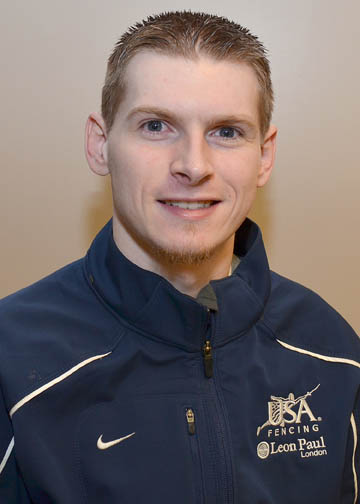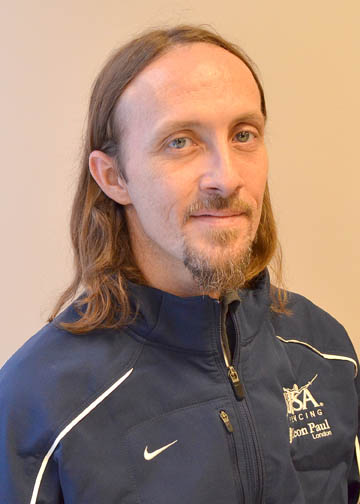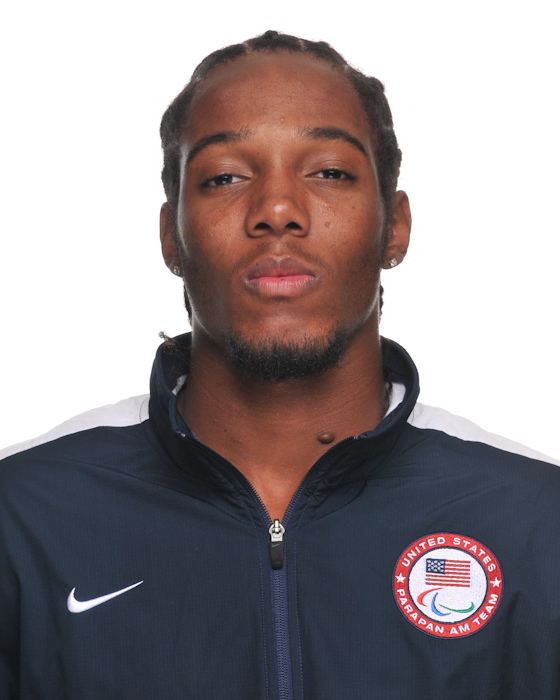As Olympic fever begins to grip the world this week, three Mississippians also have their sights set on London.
Those three—track and field athlete Shaquille Vance of Houston, Miss., and wheelchair fencers Ryan Estep of Florence and Joey Brinson of Florence—will represent the United States at the 2012 Paralympic Games, which kick off August 29.
The Paralympic Games, like the Olympic Games, is an international multi-sport competition, but features athletes with physical disabilities including amputations, blindness, cerebral palsy, and paralysis. The games have been held after the Olympics since 1960, and are today one of the world’s largest international sporting events.
For the trio, being selected for the U.S. team has been the culmination of years of training, conditioning, competition and determination. And Jackson’s Methodist Rehabilitation Center has been with them each step of the way.
“It’s an incredible honor for Methodist Rehab to have not one, or two, but three athletes going to the Paralympics in the same year,” said Ginny Boydston, director of Methodist Rehab’s therapeutic recreation program. “The Paralympics is the elite. It’s the highest you can go in sport in our world.”
Methodist is home to the Blade Rollers, Mississippi’s only wheelchair fencing team and the largest such team in the nation. The Blade Rollers are coached by David Williams of Ridgeland, and managed by Boydston, who also serves as team leader for the U.S. Wheelchair Fencing Team.
“I’m so excited, but also humbled, by the fact that there’s only six wheelchair fencers from the U.S. going over there and two of them are from the same town and went to the same high school,” Estep said.
Estep, 25, and Brinson, 35, were both sports standouts at Florence High School, before respective auto accidents left them each paraplegic. Both have channeled their competitive spirit into wheelchair sports.
“It’s been my goal for a long time to make the Paralympics, even in other sports before I started fencing,” Brinson said. “I was into sled hockey, and I tried out for the national team in it and I made it as an alternate there. In anything I do I want to reach the highest level. I’m really competitive.”
Both have quickly advanced in a sport that is notoriously difficult to master, even for those with prior fencing experience.
“I like to say it’s infinitely the same, but vastly different,” said Williams, who has taught able-bodied fencing for 30 years. “With wheelchair fencing you’re real close up and you don’t have the luxury to retreat out of distance. It’s on all the time. It happens really fast, and you have to be very alert—you can’t get away.”
Brinson has been fencing since 2006, and he is now ranked No. 1 in the U.S. in his weapon of choice, the sabre. Estep has only been fencing since 2009 and is already ranked No. 1 in the U.S. for epee.
“Compared to the other fencers in the U.S. that are on the national team, and compared to Europeans, where fencing is a major sport, they don’t have a lot of experience,” Boydston said. “But they’ve fast-tracked so quickly, with their skill, their development and the mental aspects of the sport.”
Being able to train together and maintain a friendly repartee of one-upmanship has served their development well.
“We’re very fortunate to have each other to train with,” Brinson said. “We’re going to push each other, we’re that competitive.”
“We both want to win so bad that there are times we could bite a nail in half because we’re so mad at the other person,” Estep said, laughing. “We’ve definitely left practice with a few bruises.”
Both say they are grateful for the support of Methodist Rehab as well as the Mississippi Paralysis Association, which funds much of their travel expenses. In addition to Tuesday and Thursday night practices at Methodist, the duo travels to Louisville, Ky., monthly to train with U.S. Paralympic coach Les Stawicki, who helped bring the sport to the U.S. for the 1996 Paralympics in Atlanta.
“He’s well-respected around the world,” Brinson said. “I look up to him a lot.”
Vance got into running through Methodist Orthotics & Prosthetics, which outfitted him with his attention-grabbing “cheetah” foot.
The cheetah is a carbon fiber prosthetic foot for sporting activities built by Iceland manufacturer Össur, which renowned South African Olympic athlete Oscar Pistorius also wears. By coupling the cheetah foot with a custom socket and prosthetic knee, Methodist designed a high-performance running prosthesis for Vance to utilize in track and field events.
Vance, 21, was a star high school football and track standout before a 2009 sports injury led to an above-the-knee amputation of his right leg.
“I can’t say it’s a lifetime dream because my accident was only three years ago,” Vance says of making the team. “When I first got hurt, I had never heard about a cheetah foot or the Paralympics or any of those things. But from there on, it’s been my goal.”
Methodist O&P had been looking to get more involved in athletics, and with Vance they found their ideal candidate. His natural abilities and his drive to succeed put him on the fast track to success as a track and field competitor.
“We never imagined that it would happen for him in such a short period of time,” said Jennifer Long, a certified prosthetist at Methodist O&P who has been Vance’s sponsor, mentor and confidant.
“Jennifer is like my second mom,” Vance said. “I can call her at any time and I can ask her for anything. I can definitely say if it wasn’t for her and Methodist I wouldn’t be here right now. They’ve helped me in every way possible.”
Working with Vance has benefitted Methodist as well, as they have maintained his cheetah foot to keep the device in tip-top competitive condition.
“The mechanics of running are just a little bit different from the mechanics of walking, so it’s been a great learning experience for us,” Long said, adding that they hope in the future to add more athletes to their team. “It just can’t stop here. It’s been such a great part of Shaquille’s life and healing process.”
Now Vance is set to compete in the 100m, 200m and shot put at the Paralympics, a mere two years since first trying on the cheetah foot.
“When I won my first race, it motivated me,” Vance said. “From then on I just wanted to set the world record. Right now I’m just chasing that dream.”
Vance says he has another reason to stay motivated: He’s expecting a baby daughter in September.
“When she comes, I want her daddy to be a gold medalist,” Vance said.
All three athletes say they are deeply honored to represent not only Methodist, but also the state of Mississippi and the United States in the Paralympics. They hope to increase awareness of their respective sports so others like them can have the opportunity to compete and excel.
They all agree that athletes like Pistorius, the double amputee track star who will run against able-bodied competitiors for the South African team in the Olympics, bring welcome awareness of athletes with disabilities.
“People have seen what we’re really about, what we can do, how we train,” Vance said. “We train just as much as the able-bodied guys do. Probably even harder.”
Now with London just a month away, the three have to look forward to what will be an unforgettable experience.
“When we roll out for opening ceremonies, I think that’s going to be the moment that it will hit us: all the sacrifices that we’ve made and everyone else has made to get us to this point,” Estep said. “I think it will be an overwhelming moment.”




